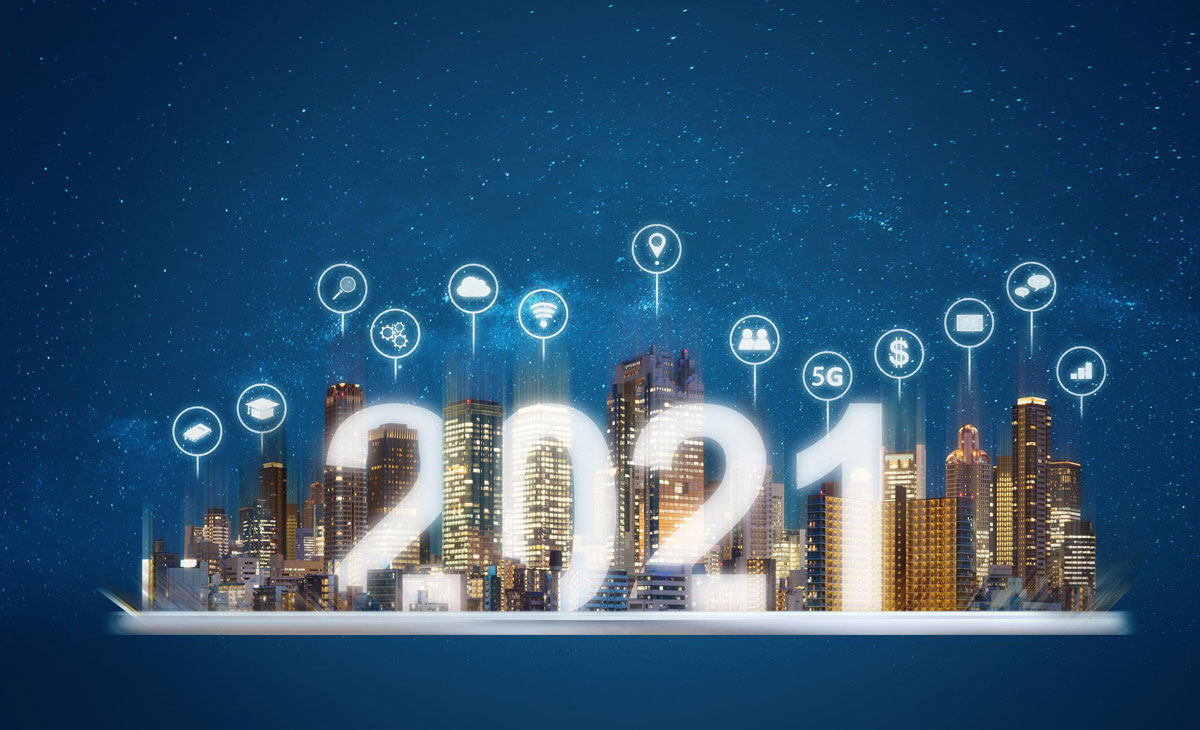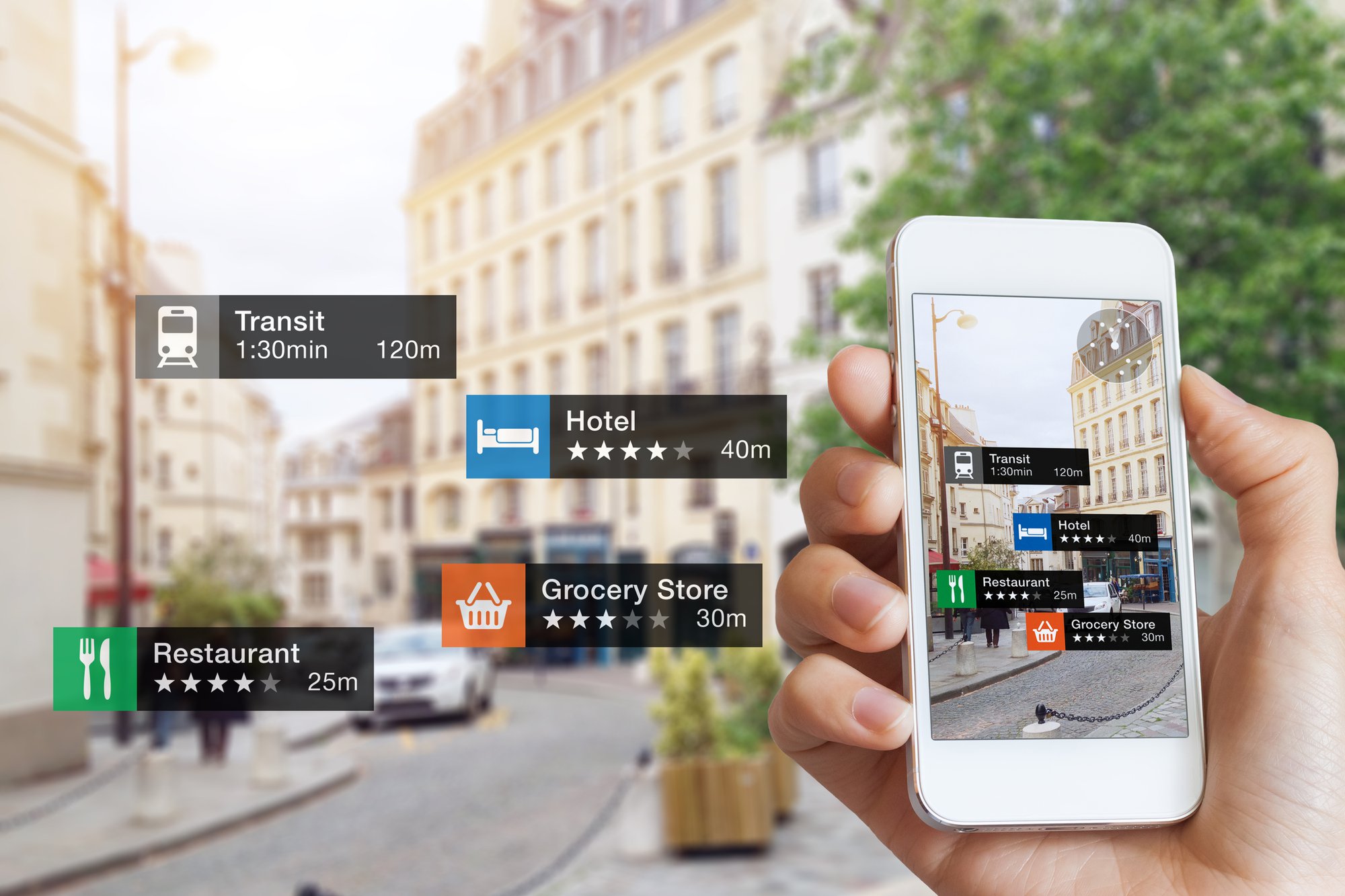
COVID-19 has driven change in an important and unexpected way, with a growing number of organizations across sectors accelerating their digital transformation efforts to make their operations more agile, more efficient and to respond to dramatic shifts in customer demand and expectation.
Which technology and development trends in 2021 will shape the future of work? As the tech industry expands rapidly, key innovations include advances in cybersecurity and artificial intelligence (AI). The technology sector is expected to grow to $2 trillion in 2021, accounting for more than a tenth of the US economy. This will require the efforts of 12.4 million people, an annual increase of over a quarter million.
Developers now account for the dominant part of the technology workforce, at well over a million jobs. Systems analysts and engineers are fast approaching, slightly under a million. Network administrators, architects, support, and data specialists round off the occupational rankings.
The main sector of the tech industry in terms of size covers IT and custom software development, at 2.7 million employees. Engineering ranks second at just under two million, but with a faster growth rate. Telecoms and manufacturing each have over a million technology employees. Another half a million work on packaged software products. The increasing size and relevance of the technology industry make it critical for a business to have a strong digital identity.
Another important area for businesses to develop is data science. This involves applying technology to evaluate the massive volumes of information pouring forth from society. By identifying the useful bits, businesses can innovate before competitors do.

As online attacks increasingly threaten business operations, the need for rigorous cybersecurity measures has become a business priority, protecting all categories of data from theft and unauthorized use. This includes personally identifiable information (PII), protected health information(PHI), personal information, intellectual property, data, and governmental and industry information systems.
Cybercriminals getting smarter and their modus operandi becoming more resilient to conventional cyber defenses, meaning out-of-the-box cybersecurity solutions like antivirus software and network perimeters are proving to be no match for evolving cyber threats. For instance, the move to cloud and hybrid IT environments—along with increasing numbers of cloud-based systems, remote workers, and connected devices—are constantly expanding and dissolving the network perimeter.
With the internet growing into a key piece of global infrastructure—with approximately 4.66 billion people using the internet every day—the growth of smart devices, 5G, and AI promises to create even more data points for hackers as the perimeter of a company’s network becomes more and more porous.
Zero Trust is a new type of security architecture that leverages the strengths and benefits of both traditional authentication and authorization. Rooted in the principle of “never trust, always verify,” Zero Trust is designed to protect modern digital environments by leveraging network segmentation, preventing lateral movement, and providing Layer 7 threat prevention.
By removing the assumption of trust from the security architecture and authenticating every action, user, and device, zero trust helps entities to adopt a more robust and resilient security posture. As the benefits of Zero Trust continue to become apparent, enterprises are catching on. The global Zero Trust market is expected to grow to US$38.6 billion by 2024.
The Zero Trust approach is not a product, solution, or platform—it’s an entirely new way to think about security. It represents a philosophical shift from how security is managed and will likely require a mindset change across an organization. An incremental approach aligned to business objectives can help demonstrate the value of a Zero Trust approach and enhance stakeholder confidence and acceptance.

One of the main technology trends going on now is cloud computing services. These have sizable advantages for business, more so during COVID-19, such as allowing people to work from anywhere securely. Cloud computing will only grow more relevant as networks expand and 5G develops.
Cloud computing involves hosting software or hardware products as internet services. Organizations may run their own cloud infrastructure, or rent public cloud facilities. Either approach allows a business to grow its IT infrastructure precisely as necessary. Without any complex staffing requirements, businesses can instantly deploy their own ready-to-use installations.
Cloud computing now brings in billions of dollars annually. This will increase as companies move to the cloud to connect employees and customers. Many businesses have trouble managing their multiple cloud products, with cost and security as common issues.
Outsourcing software development can decrease costs, assist in talent acquisition, and make marketing easier. In the competitive modern economy, this makes for a practical necessity. Running code in the cloud also makes security and backups straightforward. Compliance becomes less of a nuisance. Using cloud resources frees an organization to focus on its core activities instead of IT.
Businesses can reach their customers more reliably. Even small businesses can rapidly go global, while large enterprises can streamline their operations. Speed makes for one of the huge advantages. Before cloud computing, businesses had difficulty responding to sudden growth. You can run CRM, ERP, customer-facing apps, and any other software without worrying over the hardware details. Software is becoming more modular, too, allowing disparate code to work together.
Cloud computing has become a crucial part of the web, due to the value it adds such as data mobility. The public cloud infrastructure market is poised to reach $120 billion in 2021. When one looks at the cloud market for users, this rockets to over $304 billion.
COVID-19 has stirred renewed appetite for migrations to the cloud, particularly from businesses that in this time of uncertainty need an efficient, cost-effective way to move essential core assets. Revitalized in the cloud, these assets can provide a strong foundation for business-critical innovation and growth strategies in areas such as AI, edge computing, and quantum.

At the height of the pandemic, the versatility of mixed and augmented reality products came to the fore at the Imperial College Healthcare NHS Trust in the UK where doctors used Microsoft Hololens headsets whilst treating patients. It enabled other clinicians to sit in another room to see a live video feed of the doctor treating COVID-19 patients. By using the devices, staff reduced the amount of time they spent in a high-risk area by 83%.
IDTechEx predicts the augmented, virtual, and mixed reality market to be over $30 billion. Although seen as futuristic by some, augmented, virtual, and mixed reality devices have shown that they have an important part to play in many different industries. They are truly the technology of the future, today.
The basic definition of these terms are as follows:
− Virtual reality (VR): replaces reality with a completely new 3D digital environment.
− Augmented reality (AR): overlays digital content on top of the real world.
Enterprise companies are beginning to implement alternate realities into their processes for everything from education to healthcare to transport.
Here are 4 industry sectors that are leveraging AR and VR technology to transform their operations.
Education and Training – When Covid-19 struck in 2020, educators scrambled for new ways to interact with students. Video conferencing became popular as a way of interacting without physical contact. Virtual reality, however, proved a game-changer, offering an even more immersive experience that allowed students to explore 3D worlds while learning about different topics.
It’s not just students that can benefit from alternate technologies for developing new skills either. Employers can use AR and VR to improve employee onboarding and training experiences. An AR headset can walk an employee through the process of examining a piece of equipment, for example, teaching them about each element as they go.
Healthcare – Surgeons can practice complex procedures without risking expensive resources or patient comfort. Medical students can use a virtual reality headset to learn more by watching a surgeon performing a procedure – allowing for a lot more detail than they’d get peering over someone’s shoulder.
Virtual and augmented reality in healthcare also has an impact on the kind of patient support that doctors can offer. In an age of telemedicine, doctors can leverage AR and VR to see wounds and diagnose issues from a distance. Nurses can teach patients how to perform self-care activities using augmented reality overlays and graphics.
Retail and eCommerce – Businesses have been considering AR and VR for retail for a while now, and demand for these solutions grew even more significant with the onset of the global pandemic. With stores unable to open, companies needed to look for new ways to maintain customer experiences.
With AR and VR, retailers can offer customers more enhanced and pronounced shopping journeys. Consumers can shop virtually with fitting rooms that allow them to try on their clothes from home. New York’s Saks Fifth Avenue has taken it a step further. Customers can ‘try’ on products like lipsticks from the salon’s inventory via virtual reality (VR) technology. Companies can also use AR to help customers shopping online imagine what items might look like in their homes before making a purchase.
Automotive /Transport – Audi built an AR app that allows users to experience their cars on personalized test tracks to get a ‘feel’ of how the vehicle might handle. Engaging with AR and VR, the car buying process instantly becomes much more immersive.
Other sectors of the travel industry could benefit from VR and AR too. Hotels can, for instance, offer customers virtual tours of rooms before they visit. Airlines might give customers the opportunity to use a VR headset that makes them get a ‘feel’ like they’re at their destination.
The potential for AR and VR is limitless. Business leaders are realizing that these technologies are just not the domain of the entertainment or gaming space. Leveraging the technology means businesses can create safer employee environments, offer enhanced customer experiences, as well as spur more productive processes.
Add virtual robotics to the mix (whose main objective is to imitate what humans do, using our systems and interfaces but only smarter and faster) and you have a set of powerful technologies to leverage in almost any setting.
AR and VR are rapidly becoming indispensable business tools, and even outside of the 4 industries discussed, the potential for AR and VR keeps growing in virtually every sector. It’s only a matter of time before this unstoppable tech that provides convenience with thrilling experiences becomes second nature.

Rapid technological advancements are presenting new opportunities for machines to perform tasks that were once the exclusive preserve of humans. Research by Mckinsey states that deploying AI and automation technologies can do much to lift the global economy and increase prosperity at a time when aging and falling birth rates are retarding growth.
McKinsey’s research projects that AI and automation will displace around 15% of the global workforce. But, even as workers are displaced, there will be growth in demand for work, and consequently, jobs. Mapping out the scenarios, the data shows additional labor demand of between 21-33% of the global workforce (555 million and 890 million jobs) to 2030, more than offsetting the numbers of jobs lost.
The AI market globally is expected to explode to around $190 billion in 2025. Much of this market will involve wearable devices. Processors specifically made for AI will account for $83 billion. The net effect of AI on the economy exceeds the direct growth of the industry itself, and by a wide margin. This technology could increase the productivity of businesses by $2.9 trillion.
It’s expected that AI applications will be a prominent feature in the coming years, automating routine tasks like invoicing and filling out paperwork. Companies in practically every industry are deploying AI, and as many as 75% of executives worry that their organizations will fail if they do not embrace AI and automation.
AI is already proving lucrative for some. Netflix, for instance, has a recommendation assistant that rakes in a billion dollars annually. In supply chain management, the industry gaining the most from AI thus far, costs have dropped by 44%.
Nearly half of Americans use AI-powered tools like voice search and digital assistants. Globally, digital assistants are predicted to double from 4.2 billion to 8.4 billion in the next few years. With 86% of businesses considering AI as an essential component of their operations in 2021, some areas where AI sees more action include IT automation, cybersecurity, quality control, and predictive analytics. Machine learning ranks among the more popular types of AI, with $37 billion of investments in the US alone.
And while Europe has the largest talent pool of researchers (43 064) in artificial intelligence compared with 28 536 in the United States, a study by the European Investment Bank (EIB) has found the estimated investment gap in artificial intelligence and blockchain technologies in Europe could be as much as $11 billion annually.
The ongoing progress of automation and AI is revolutionizing society and the economy. Artificial agents now work in vehicles on highways, in supermarkets, in offices and houses, and practically anywhere you look. They can identify patterns somewhat as humans can. This allows for product personalization, defect identification, and fraud detection, among numerous other uses. One technique alone, artificial neural networks (a form of machine-learning algorithm with a structure roughly based on that of the human brain) may soon contribute trillions of dollars to the economy.
Some sectors of the economy likely to see unusually large influences from AI include medicine, for predicting health issues; the automotive sector, which already makes heavy use of AI for production and self-driving; cybersecurity, for predicting attacks; and eCommerce, for all aspects of marketing.
Technology can be a source of new competitive advantage for some organizations and a threat for others. The distinction between corporate strategy and technology strategy is blurring. Smart corporate strategists are looking beyond their organization’s current tech capabilities, leveraging technological advances (and a range of future possibilities) to not only survive today’s rapidly changing business environment but also to thrive in tomorrow’s competitive landscape.
While cybersecurity threats pose risks for businesses and individuals, cloud computing offers a safer alternative for many functions. Both virtual and augmented reality are becoming integral aspects of business activity, as are AI and automation.
Constantly aware of the critical need to be agile in a fast-moving and fiercely competitive business climate, Growin is an IT consultancy that uses reliable, scalable, and evolving technology to deliver stable and innovative IT projects and products that meet requirements and exceed expectations.
Get in touch with us today and let our expert team help you execute your strategic IT roadmap and lead your business’s digital transformation efforts.